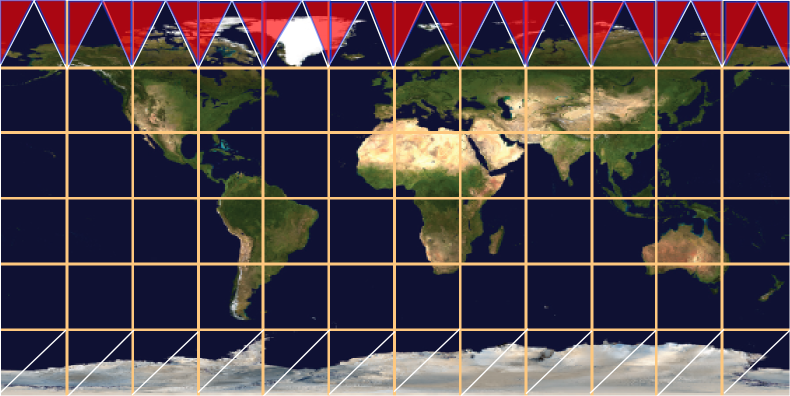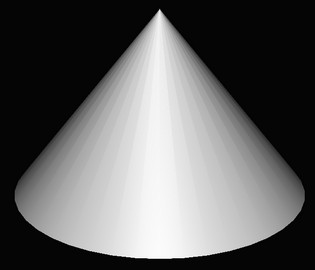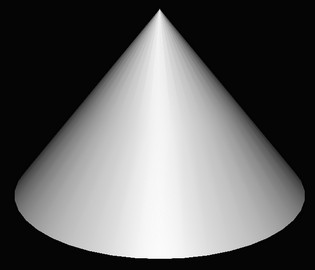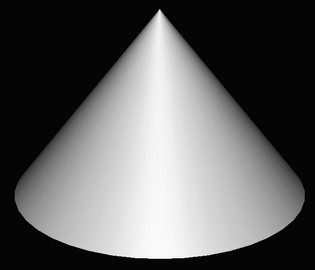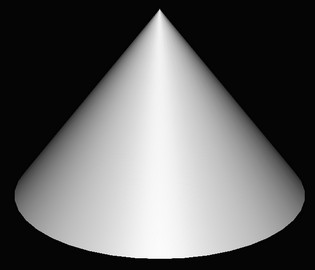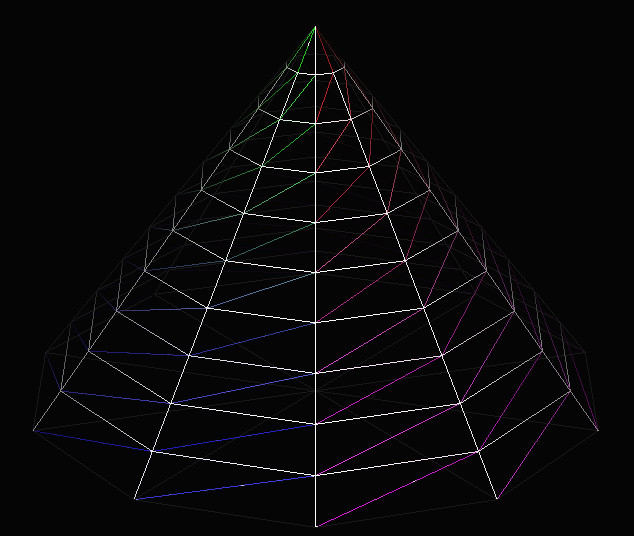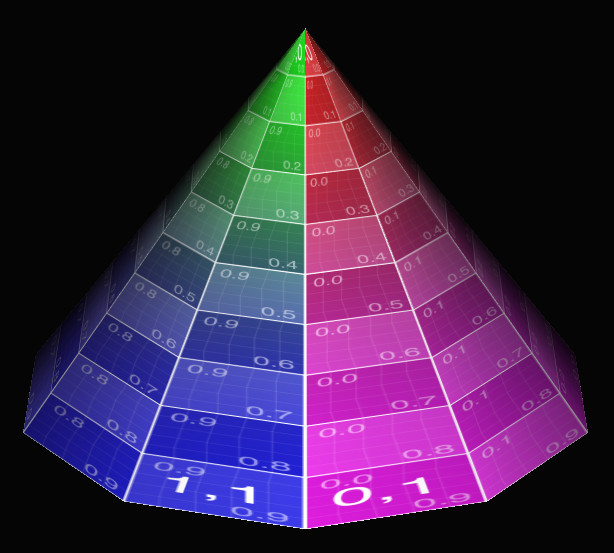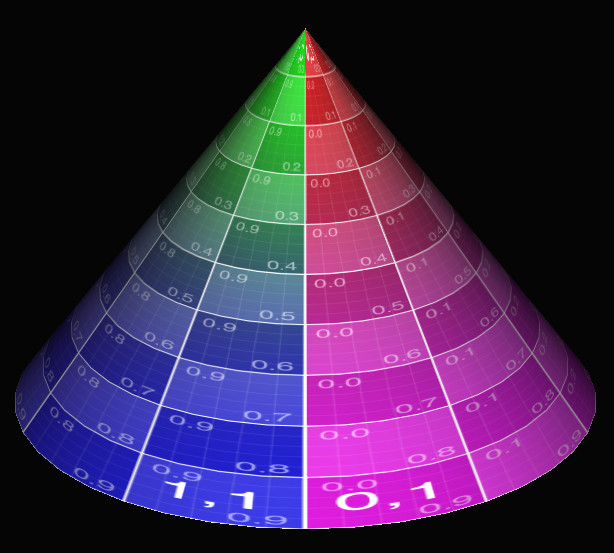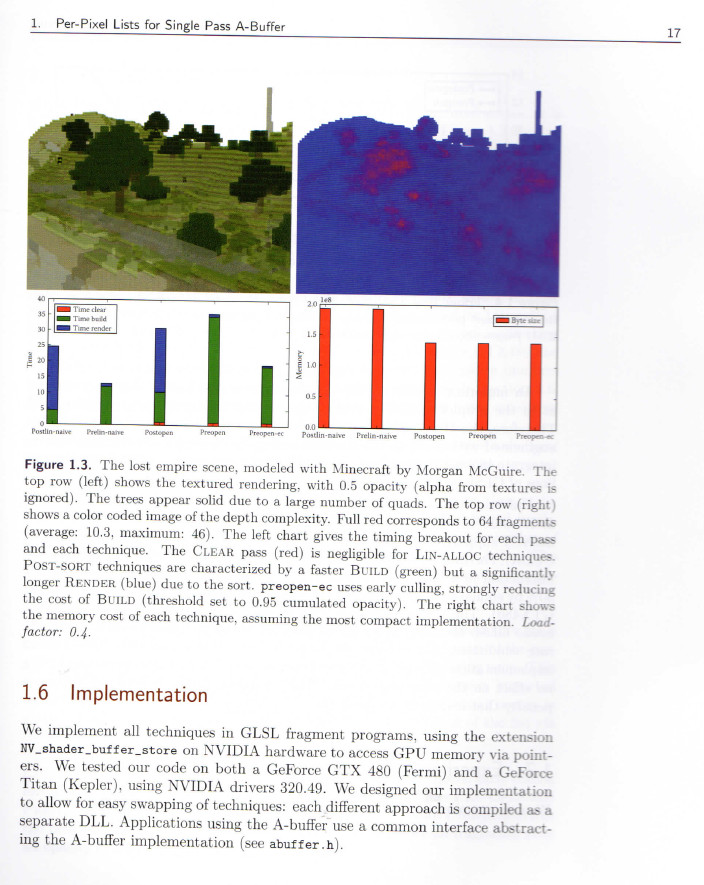New CRC Books
Well, newish books, from the past year. By the way, I’ve also updated our books list with all relevant new graphics books I could find. Let me know if I missed any.
This post reviews four books from CRC Press in the past year. Why CRC Press? Because they offered to send me books for review and I asked for these. I’ve listed the four books reviewed in my own order of preference, best first. Writing a book is a ton of work; I admire anyone who takes it on. I honestly dread writing a few of these reviews. Still, at the risk of being disliked, I feel obligated to give my impressions, since I was sent copies specifically for review, and I should not break that trust. These are my opinions, not my cat’s, and they could well differ from yours. Our own book would get four out of five stars by my reckoning, and lower as it ages. I’m a tough critic.
I’m also an unpaid one: I spent a few hours with each book, but certainly did not read each cover to cover (though I hope to find the time to do so with Game Engine Architecture for topics I know nothing about). So, beyond a general skim, I decided to choose a few graphics-related operations in advance and see how well each book covered them. The topics:
- Antialiasing, since it’s important to modern applications
- Phong shading vs. lighting, since they’re different
- Clip coordinates, which is what vertex shaders produce
CFP HPG 2015
I’m being a lazy reporter here, simply passing on the press release. That said, of all the research-oriented gathering out there, this one I find the most relevant to what I do (well, GDC, too, but HPG is better for new ideas, vs. the “proven implementations” seen at GDC). This year the HPG committee is trying to include topics relating to emerging display technologies e.g. virtual and augmented reality.
High Performance Graphics is the leading international forum for performance-oriented graphics and imaging systems research, including innovative algorithms, efficient implementations, languages, parallelism, compilers, hardware and architectures for high-performance graphics. The conference brings together researchers, engineers, and architects to discuss the complex interactions of parallel hardware, novel programming models, and efficient algorithms in the design of systems for current and future graphics and visual computing applications.
High Performance Graphics is co-sponsored by Eurographics and ACM SIGGRAPH. The program features three days of paper and industry presentations, with ample time for discussions during breaks, lunches, and the conference banquet. The conference is co-located with SIGGRAPH 2015 in Los Angeles, United States, and will take place on August 7–9, 2015.
High Performance Graphics invites original and innovative performance-oriented contributions to the design of hardware architectures, programming systems, and algorithms for all areas of graphics, including rendering, virtual and augmented reality, ray tracing, physics, animation, and visual computing. It also invites contributions to the emerging area of high-performance computer vision and image processing for graphics applications. Topics include (but are not limited to):
- Hardware and systems for high-performance graphics and visual computing
- Graphics hardware simulation, optimization, and performance measurement
- Shading architectures
- Novel fixed-function hardware design
- Hardware design for mobile, embedded, integrated, and low-power devices
- Cloud-accelerated graphics systems
- Hardware and software systems for emerging display technologies
- Novel display technologies
- Virtual and augmented reality systems
- Low-latency rendering and high-performance processing of sensor input
- High-resolution and high-dynamic range displays
- Real-time and interactive ray tracing hardware or software
- Spatial acceleration data structures
- Ray traversal, sorting, and intersection techniques
- Scheduling and shading for ray tracing
- High-performance computer vision and image processing techniques
- Algorithms for computational photography, video, and computer vision
- Hardware architectures for image and signal processors (ISPs)
- Performance analysis of computational photography and computer vision applications
- Programming abstractions for graphics
- Interactive rendering pipelines (hardware or software)
- Programming models and APIs for graphics, vision, and image processing
- Shading language design and implementation
- Compilation techniques for parallel graphics architectures
- Rendering algorithms
- Surface representations and tessellation algorithms
- Texturing and compression/decompression algorithms
- Interactive rendering algorithms (hardware or software)
- Visibility and illumination algorithms (shadows, rasterization, global illumination, …)
- Image sampling, reconstruction, and filtering techniques
- Parallel computing for graphics and visual computing applications
- Physics, sound processing, and animation
- Large data visualization
- Novel applications of GPU computing
| Papers | |
| Friday, April 17 | Deadline for paper submissions |
| Monday, May 18 | Reviews available (start of rebuttal period) |
| Thursday, May 21 | End of rebuttal period |
| Monday, June 1 | Notification of paper acceptance |
| Thursday, June 11 | Revised papers due |
| Posters | |
| Friday, June 5 | Deadline for poster submissions |
| Friday, June 12 | Notification of poster acceptance |
| Hot3D | |
| Friday, June 5 | Deadline for Hot3D proposals |
| Friday, June 12 | Notification of acceptance |
| Conference | |
| Friday—Sunday, August 7—9 |
Conference |
Full CFP here.
Limits of Triangles
You’re mapping a latitude-longitude texture on to a sphere. Pretty straightforward, right? Compute the UV coordinates at the vertices and let the rasterizer do the work. The only problem is that you can’t get exactly the right answer at the poles. Part of the problem is that getting a good U value at each pole is problematic: U is essentially undefined. It’s like asking what longitude you’re at when you’re sitting at the north pole – you can take your pick, since none is correct.
One way around this is to look at the other vertices in the triangle (i.e., those not at the pole) and average the U values they have. This gives a tessellation at the north pole something like this:
What’s interesting about this tessellation is that it leaves out half of the horizontal strip of texture near the pole. The sawtooth of triangles will display one half of the texture in this strip, but will not display the triangles covered in red. Even if you form these triangles, adding them to the mesh, they won’t appear. Recall that all points along the upper edge of the texture are located at the same position in world space, the north pole of the model itself. So any red triangles added will collapse; they’ll have zero area, as their two points along the top edge are co-located.
I show a different tessellation along the bottom strip of the texture, a more traditional way to generate the UV coordinates and triangles. Again, all the triangles with edges along the bottom of the texture will collapse to zero area, and half of the texture in the strip will not be rendered. The triangles that are rendered here are somewhat arbitrary – at least the triangles along the top edge have a symmetry to them.
There are two ways I know to improve the rendering. One is to tessellate more: the more lines of latitude you make, the smaller the problem areas at the poles become. The artifacts are still there, but contained in a smaller area. The other, ultimate solution is that you could compute the UV location per pixel, not per vertex.
That works for texturing, if you can afford to fold the spherical mapping into the pixel shader. However, this problem isn’t limited to spheres, and isn’t limited to textures. Another example is the cone and having a normal per vertex. This is a common object, but is surprisingly messy. For a cone pointing up you typically make a separate vertex for each triangle meeting at the tip, with a separate normal. This is similar to the uppermost strip for the sphere mapping above: the normal points out in a direction somewhere between the two bottom normals for the triangle in the cone.
However, you have the same sort of interpolation problem! Here’s a cone with a tessellation of 40 vertices around the top and bottom edges:
From triangle to triangle along the side of the cone, you have normals smoothly interpolating along the bottom of the cone. Moving across a vertical edge near the tip, you have sudden shifts in the normal’s direction as you go from one normal to another. Each zero-area triangle that is formed by two points touching the pole is what “causes” the discontinuity in shading when crossing an edge.
If you start to add “lines of latitude”, to vertically tessellate the surface, things improve. Here are cones with two strips of triangles, three strips, then ten strips:
It’s interesting to me that the first image, two strips of triangles, doesn’t fully improve the bottom part of the cone. Even though there are no zero-area triangles and so the normal is the same for each vertex in this area, the normals change at different rates across the surface and our eyes pick this up as Mach banding of a sort. Three strips gives three bands of poor interpolation, and so on. With ten bands things look good, at least for this lighting and amount of specularity. Increasing the tessellation gets us closer and closer to the ideal per-pixel computation.
Here are some images of the cone mapping to show the discontinuities. The first gives a low tessellation: 10 vertices around, no tessellation vertically
Half of the texture is missing on each face of the cone. If you increase the vertical tessellation, like so:
You get this:
It’s better, but there’s still a dropout at the tip (it should say “1,0 | 0,0”), plus you can see the lines on the surface are not straight – the vertical lines on the faces wobble. Each quadrilateral is a trapezoid, so using two triangles for this mapping doesn’t match it all that well.
If you increase the tessellation in both directions, you get closer still to a per pixel mapping, the correct answer:
This tessellation is 40 points around, 10 points from bottom to top. The very tip still has half its information missing, but otherwise things look reasonable. Cranking the resolution up to 50 around and 50 from bottom to top mostly cleans up the tip (ignoring the lack of high-quality texture sampling):
This is an old phenomenon, but still a surprising one, at least to me. We’re used to tessellating any higher-order surface into triangles for rasterization or ray tracing. Usually I increase tessellation just to capture geometric details, not normal or texture interpolation. You would think it would be possible to easily set up triangles in such a way that relatively simple mappings would not have problems such as these. You basically want something more like a quadrilateral mapping, where the left edge of the triangle is using, say, U = 0.20 along its edge and the right edge uses U = 0.30. The problem is that the point at the tip has a U of say 0.25, so both edges interpolate from there.
I should note that this problem is solvable by messing with the mappings themselves. For example, you could instead use a different texture and a cube map projected onto a sphere to solve that case, which would also decrease distortion and so require less texture resolution overall.
Woo, Pearce, and Ouellette have a lovely old paper about this and other common rendering bugs and their solutions. They reference a paper by Nelson Max from 1989, “Smooth Appearance for Polygonal Surfaces” for using C1 continuity. This doesn’t seem easy to do on the GPU without a lot of extra data. Has anyone tried solving this general problem, of treating two triangles as a quadrilateral mapping? I don’t really need to solve this problem right now, I just think it’s interesting, something that’s doable in a pixel shader in some way. I’m hoping someone’s created an elegant solution.
Update: and I got a solution of sorts. Thanks to Tom Forsyth for getting the ball rolling on Twitter. Nathan Reed’s post on this topic talks about setup, Iñigo Quílez talks about performing bilinear interpolation in the shader and gives a ShaderToy demo. However, these seem a bit apples and oranges: Nathan is working with projective interpolation, Inigo is working with equi-spaced bilinear interpolation – they’re different. See page 14 on of Heckbert’s master’s thesis, for example.
Another update: Jules Bloomenthal notes how his barycentric quad rasterization work fixes cones.
60 Hz, 120 Hz, 240 Hz…
Update: first, take this 60 vs. 30 FPS test (sadly, now gone! Too much traffic, is my guess). I’ll assume it’s legit (I’ll be pretty entertained if it isn’t). If you get 11/11 consistently, what are you looking for?
A topic that came up in the Udacity forum for my graphics MOOC is 240 Hz displays. Yes, there are 240 Hz displays, such as the Eizo Foris FG2421 monitor. My understanding is that 60 Hz is truly the limit of human perception. To quote Principles of Digital Image Synthesis (which you can now download for free):
The effect of temporal smoothing leads to the way we perceive light
that blinks, or flickers. When the blinking is slow, we perceive the
individual flashes of light. Above a certain rate, called the critical
flicker frequency (or CFF), the flashes fuse together into a single
continuous image. Far below that rate we see simply a series of still
images, without an objectionable sense of near-continuity.
Under the best conditions, the CFF for a human is around 60 Hz [389].
Reference 389 is:
Robert Sekuler and Randolph Blake. Perception. Alfred A. Knopf, New York, 1985.
This book has been updated since 1985, the latest edition is from 2005. Wikipedia confirms this number of 60 Hz, with the special-case exception of the “phantom array effect”.
The monitor review’s “Response Time and Gaming” section notes:
Eizo can drive the LCD panel at 240 Hz by either showing each frame twice or by inserting black frames between the pictures, which is known to significantly reduce blurring on LCD panels.
This is interesting: the 240 Hz is not that high because the eye can actually perceive 240 Hz. Rather, it is used to compensate for response problems with LCD panels. The very fact that an entirely black frame can be inserted every other frame means that our CFF is clearly way below 240 Hz.
So, my naive conclusions are that (a) 240 Hz could indeed be meaningful to the monitor, in that it can use a few frames that, combined by the visual system itself, give a better image. This Hz value of the monitor should not be confused with the Hz value of what the eye can perceive. You won’t have a faster reaction time with a 120 Hz monitor.
The thing you evidently can get out of a high-Hertz monitor is better overall image quality. I can imagine that, on some perfect monitor (assume no LCD response problem), if you have a game generating frames at 240 FPS you’re getting rendered 4 frames blended per “frame” your eye received. Essentially it’s a very expensive form of motion blur; cheaper would be to generate 60 FPS with good motion blurring. Christer Ericsson long ago informally noted how a motion-blurred 30 FPS looks better to more people than 60 FPS unblurred (and recall that most films are 24 FPS, though of course we don’t care about reaction time for films). What was interesting about the Eizo Foris review is that the reviewer wants all motion blur removed:
You probably already own a 120 Hz monitor if you are a gamer, but your monitor most likely does not have the black frame insertion technology, which means that motion blurring can still occur (even though there is not [sic] stuttering because of 120 Hz). These two factors are certainly not independent, but 120 Hz does not ensure zero motion blurring either, as some would have you believe.
The type of motion blur they describe here is an artifact, blending a bit of the previous frame with the current frame. This sort of blur I can imagine is objectionable, objects leaving (very short lived) trails behind them. True (or computed) motion blurring happens within the frame itself, simulating the camera’s frame exposure length, not with some leftover from the previous frame. I’d like to know if gamers would prefer 60 FPS unblurred vs. 60 FPS “truly” blurred. If “unblurred” is in fact the answer, we can cross off a whole area of active research for interactive rendering. Kidding, researchers, kidding! There would still be other reasons to use motion blur, such as the desire to give a scene a cinematic feel.
For 30 vs. 60 FPS there is a “reaction time” argument, that with 60 FPS you get the information faster and can react more quickly. 60 vs. 120 vs. 240, no – you won’t react faster with 240 Hz, or even 120 Hz, as 60 Hz is essentially our perceptual maximum. My main concern as this monitor refresh speed metric increases is that it will be a marketing tool, the equivalent of Monster cables to audiophiles. Yes, there’s possibly a benefit to image quality. But statements such as “there is not [sic] stuttering because of 120 Hz” make it sound as if our perceptual system’s CFF is well above 60 Hz – it isn’t. The image quality may be higher at 120 or 240 Hz, and may even indirectly cause some sort of stuttering effect, but let’s talk about it in those terms, rather than the “this faster monitor will give you that split-second advantage to let you get off the shot faster than your opponent” discussion I sometimes run across.
That said, I’m no perception expert (but can read research by those who are), nor a hard-core gamer. If you have hard data to add to the discussion, please do! I’m happy to add edits to this post with any rigorous or even semi-rigorous results you cite. “I like my expensive monitor” doesn’t count.
p.s. I got 4/11 on the test, mainly because I couldn’t tell a darn bit of difference.
SIGGRAPH 2014 Book Crop
I’ve updated the graphics books listing hosted at our site. This is excruciatingly dull HTML editing; I hope it helps you out. Many of the additions are from CRC, since I was able to view their books at SIGGRAPH – the number of book vendors seemed way down this year, maybe two total? If you find (or wrote!) a relevant book that’s not listed, let me know.
The secret takeaway on our webpage: check the additional links I give at the end of most listings. Many books have some sort of free preview and a related website with code, lecture notes, etc. For example, Multithreading for Visual Effects has a website that includes the SIGGRAPH 2013 course notes that the book is based on.
I like that the new book Introduction to Computer Graphics: A Practical Learning Approach has an associated website named http://www.envymycarbook.com/, chosen because the book’s overarching project is developing a race driving game. Calling their book Envy My Car would have been wonderfully foolish. I guess this is a reason why we still have publishers.
There are also other interesting resources you can find tucked away in these websites, such as this list of on-line articles related to Game Engine Architecture. A bunch of the URLs listed there are easily-discovered wikipedia links, but quite a few are solid blog entries or other web pages you might not find in a quick search. This sort of editorial grooming of web resources is valuable. The 2nd edition’s list of URLs is not up yet, and I can understand why. Please don’t remind me how dated a fair bit of our own main page has become – managing links is a giant time suck, so I appreciate it whenever anyone else makes this sort of effort.
Dig deep enough on some of these book websites and you might find oddities such as this list of ten reasons to write a computer graphics textbook. I guess we’re in the bastard category?
I did do some back-filling, adding older books that could (someday) be relevant to interactive rendering, e.g., Production Volume Rendering. I didn’t add all possible vaguely-related books. From the cover and title, The Magic of Computer Graphics looks like a coffee-table book, pretty pictures and minimal content. Looking inside, it turns out to be a heavy-duty text on materials and illumination theory. For example, by page 11 you’re exposed to an integral for the BRDF, and that’s the ninth equation introduced by then. I left it out mostly because it’s an odd duck. The book Visual Perception from a Computer Graphics Perspective looks like a good volume if you’re really really into perception, but not all that related to interactive 3D graphics. I was also tempted by Digital Geometry in Image Processing, mostly because of the cover – I’m in solidarity with anyone who voxelizes teapots. This book sounds like computer graphics, but instead turns out to give a glimpse at how huge the world is. There’s a whole area of study of the theory of measurement for pixel and voxel centered coordinates? Wow. But it doesn’t look all that relevant. Feel free to read it and prove me wrong, that would be great.
No book reviews for now, as I haven’t seriously examined the newer books yet. I’ve asked for a (very) few review copies, and hope to cover these in the upcoming months. There is one book I know I won’t review (and won’t list), this alternate-universe version of Real-Time Rendering, accidentally issued by CRC Press without the realization that they already had a book with this title. An embarrassment for them, so I feel a little rude to mention it, but honestly… It was on display at the CRC booth, but not next to their “other” Real-Time Rendering, which would have made a good photo.
Luckily CRC can’t sue itself for passing off and unfair competition. It’s an interesting area of the law – titles are not copyright; trademark applies to only a series of books (e.g. “… for Dummies”). Searching on Introduction to Computer Graphics will turn up about four books, including the new one from CRC. This is fair, since the title is pretty generic and none of the books has established itself as the well-known one. I look forward to someone testing the waters in the future and publishing Physically Based Rendering: From Hog to Lard.

Free New Computer Vision Book
The book “Computer Vision Metrics: Survey, Taxonomy, and Analysis” is available for free download as a PDF or other formats. Go to the “Source Code/Downloads” tab in the middle of the page and work your way through the labyrinth. Also, you can get the Kindle edition for free. From my pretty limited knowledge of image processing, this looks like a useful survey book, running through common techniques and pointing to relevant references. Me, I was interested in segmentation algorithms for non-photorealistic rendering, and it has a reasonable section all about this topic.
Also, don’t forget that the (also good) book “Computer Vision: Algorithms and Applications” is free for download as a PDF (and without the maze; here’s the direct link).
Big World, Secrets of the Teapot
If you’re a member of SIGGRAPH, one perk is that you have access to the ACM Digital Library’s graphics related content. The SIGGRAPH benefits document notes:
- Access to all ACM SIGGRAPH related content in the ACM Digital Library (This includes SIGGRAPH, SIGGRAPH Asia, and about 20 or more small conferences)
I learned where to find the list of 20 small conferences, it’s here. And it’s not 20, it’s over 100. Admittedly, some of these symposia were run just once or twice, but I appreciate the access nonetheless. It’s a big world! Wandering through this list is fascinating, and a little nostalgic – “Ahh, remember when that topic was a hot new trend? Whatever happened to it?” Honestly, it’s exciting to see so many areas where graphics has an effect. If I had students looking for research topics in graphics and no strong preference about what area they wanted to explore, I’d point them at this page as a source for inspiration, dry as it looks.
I asked about this list because I had a problem accessing some NPAR papers through the DL. As usual, I drove around the damage by using Google Scholar and finding the papers I wanted elsewhere, for free. To the ACM’s credit, they responded to my query about whether I was supposed to have access to NPAR, since I had access in the past. I was indeed, and they fixed the DL the next day. So, the takeaway is that if you find you don’t have access and think you should, let the ACM know at acmhelp@hq.acm.org.
Finally, I found this just peculiar, on this page:
Seriously? The secrets of the teapot cannot be fully revealed? Who (the heck) would not give reprint permission? Or was it just a matter of someone being unreachable, and the default being the text couldn’t be reprinted? There’s a story there…
Books page updated
I spent an inordinate amount of time just updating the books page at this site. It hadn’t been done for about two years – I can finally check this task off the list. It took awhile tracking down related websites for each book, especially Google Books samples, which can be quite large and worthwhile for some books. I also cleaned out older volumes from the listing and updated the recommendations list.
From what I can tell – and please do tell me if I’ve missed anything – beyond API books (OpenGL and DirectX) and the GPU Pro series, there have been very few new graphics books since 2013. The major release has been a new edition of Computer Graphics: Principles and Practice. There was also The CUDA Handbook, which is somewhat graphics related but not strictly so. I also included The HDRI Handbook; even though it’s more a user’s guide, it does have some good bits about the theory of tone mapping and much else, in an area that can use more coverage. I don’t bother listing the many books about Unity 3D, the Unreal Engine, etc., since those truly fall in the area of guides.
Anyway, that’s all until SIGGRAPH, when I can take a look at what else is out there.
GPU Pro 5 is out
Really, the title says it all, the book GPU Pro 5 is shipping. Sadly, there’s no “Look Inside” for the book on Amazon; I’ll hope they at least put the Table of Contents there. You can find a rough Table of Contents on the CRC site; rough in that you can’t see the number of pages for each article. A few articles are quite lengthy: Physically Base Area Lights is 34 pages long, Hi-Z Screen-Space Cone-Traced Reflections is an incredible 44. The rest are in the 10-20 page range.
You can get a taste of the book at the GPU Pro blog, it has previews of a large number of the articles. At $70 this is not a casual purchase, but if you’re a practitioner and just one article saves you 2 hours, the book’s more than paid for itself.
Me, I was amused to see the following, a model from Morgan McGuire’s high-quality model repository – hey, that’s from our world! (And you thought I was done with Minecraft references here.)
